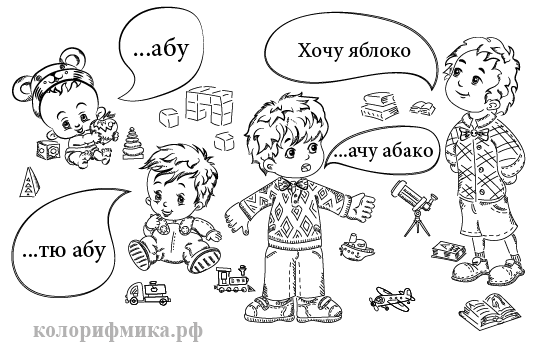ДОСТУП ОТКРЫТ
 |
Switch to Russian |
About the Music of Speech.
To our ears, speech is perceived as sound waves, much like music. The ear captures these auditory signals, impartially discerning parameters such as amplitude (volume) and frequency (pitch). Everything related to the combination of vowels and consonants, which form a syllable (and to which most importance is often attributed), are mere overtones responsible for timbre. Moreover, they are usually the last to be perceived.
Let's conduct an experiment. Shout from the kitchen to a child in another room a familiar phrase like, "Did you wash your hands? Come to the table, or the soup will get cold!" The child might not have heard every syllable distinctly, but they understood you perfectly. Now utter the same phrase with the same intonation, substituting a few consonants and unstressed vowels. The child will likely not detect the difference. However, if you keep the original syllables and stresses in the words but alter the semantic accents, rhythm, and intonation, the child might be puzzled. They might even rush to the kitchen and ask, "What, mom?" Thus, we can establish another equally evident rule:
Maintain the natural intonation and pace of speech!
Never, at any stage of learning, starting from the first lesson, do we stray from the natural intonation of speech, maintaining its pace, rhythm, and semantic hue.
- But wait! Children speak quickly and with intonation right away? What about the principle of "from simple to complex," isn't that the foundation of any learning process?
Indeed, that principle is essential, and we don't intend to deviate from it. However, this principle means not transitioning from slow speech to fast, not from emotionless recitation to vibrant language, not from specific to general, but from short phrases to long ones, from less articulate speech to clear speech.
- So, children should intentionally butcher the language?
Imagine that, yes! Such "butchering" (i.e., swallowing letters) is harmless and natural. In Tamara Ignatova's course, listeners are advised: "First, listen to the speaker, then say what you hear and check yourself, listening to the speaker again." Precisely, "speak what you hear," even if it's a verbal mush with stressed vowels. Reflect what you hear, what caught your ear, and mumble the rest in the same rhythm and pace.
What do they say in Baby land?
Why, the oddest things;
Might as well try to tell
What the birdie sings.
What do they talk about in the land of babies? Can we attempt to convey what a bird sings about? This English song tenderly captures the essence of baby babble. Similarly, Chukovsky said: "And if you can't say 'Oink,' shout 'Beep' without hesitation." I consider the poet's words to be one of the primary principles in language learning. Yes, let it be "Beep" at first! We'll gradually grow to "Oink"! The main thing is not to be afraid, not to remain silent!
Above all, don't be afraid, don't remain silent!
Imagine an artist painting a watercolor landscape of a birch grove from a hundred meters away, lamenting that he can't discern the tiny veins on the leaves from such a distance. By and large, even the articulate speech of an adult (not a student) resembles that same watercolor landscape, where it's impossible to clearly hear every pronounced vowel and consonant.
The real issue arises when there's a distortion of rhythm and intonation, where we, like a jackhammer, forcefully impress each syllable.
Let's trace the evolution of the phrase "I want an apple" through various stages of a child's growth (starting from age 2):
Roughly so. Meanwhile, there's never a deviation from the rhythm and intonation of the phrase.
From a physics standpoint, a phrase with distorted intonation is fundamentally different in amplitude-frequency characteristics. In this case, along with the intonation, the envelope changes, which distorts the meaning of what's said to the point of unrecognizability (as in one of the aforementioned experiments). Thus, we fill our memory with false signals.
- Alright, that makes sense for phrases, but what about individual words?
Let's pronounce aloud the simplest word "table" and listen to ourselves carefully. Now, let's say a few phrases with this word without adding any endings to it.
- Sit at the table!
- Where's your table?
- Is this a table?
- Yes, that's a table.
Hear how the word has changed. It came to life, sounding anew each time. The vowel "a" transformed, sometimes extending into a beautiful melodic diphthong, rising or falling, turning into a prolonged "a-a" or even slightly "a-e," but never did the word sound as impassively, dryly, and lifelessly as in the first variant.
Let's now consider an example from real life, not delving deeper or looking wider, but merely taking a single step to the side.
ДОСТУП ОТКРЫТ